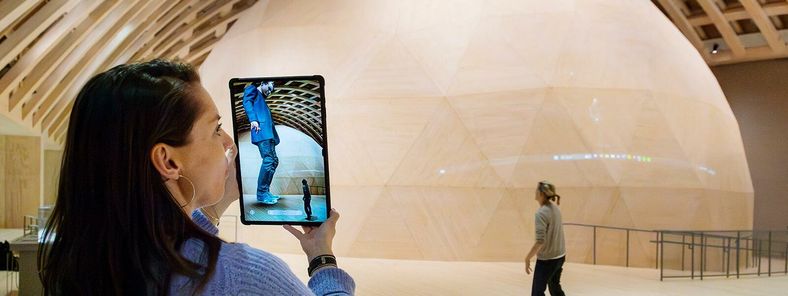Homo Colossus at Tekniska Museet

|
When: Saturday 2024-02-24: 13.00-18.00 Where: Tekniska museet, Museivägen 7, Norra Djurgården. Bus 69 to Museiparken. |
|---|
How big would humans be if they ingested through their mouths all the energy they consume in their lives, including, for example, the fuel to transport goods, the energy to heat their homes, everything, added up? Well, our estimate for the average Swede is 13 meters tall, weighing 30 tons. (Watch this trailer). What does this mean for our planet? Can we shrink? Join us on our timely discussion at Tekniska Museet on February 24, 2024 from 13:00 to 18:00. We will demonstrate our project in Wisdome, the new Tekniska Museet exhibition space.
On February 24, the research project "Homo Sapiens till Homo Colossus" takes over Tekniska's DEMOSTAGE. Through science, technology and augmented reality, Swedes' energy consumption is visualized.
The consequences of our energy consumption
Homo Colossus is a research project and a collaboration between KTH, the Royal Academy of Arts, Art Promotion and Changenity and it is funded by FORMAS the Swedish Research Counci for Sustainable Development. Together, they have considered the idea that the bigger we are, the more energy we need. But what if we include all aspects of our energy consumption in our daily lives? That means not only the calories from the food we eat, but also the fuel that powers our vehicles, the hot water that heats our homes, and the electricity that lights our cities and powers the internet.
What would we look like if we visualized all these energy sources? The answer is that an average Swede would weigh 30,000 kilos, which is four times heavier than the largest elephant!
Through the lens of our energy footprints
Enter a world where every car trip, hot water usage and every watt of electricity translates into our physical size. Through the research project's art installation, we can explore the question "How do we look through the lens of our energy footprints?"
Credits
Core co-creation team:
- Project Leadership: Daniel Pargman
- Technical Leadership: Mario Romero
- Art Direction: Åsa Andersson Broms
- Art Dissemination: Per Hasselberg
- Communication: Belinda Retourné
- Digital Art, modeling and animation: Esther Ericsson
- Interactive Art, immersive rendering: Valentin Malmgren
- Custome Design: Caspar Broms
- Documentary creation: Max S. Lauritzen
Collaborators:
- Media Consulting: Björn Thuresson
- Development and testing: Ingemar Markström
- Museum curation: Lisa Hellmark
- Museum technical leadership: Jesper Wallerborg
Funding and support:
- Funding: Formas, a Swedish Research Council for Sustainable Development
- Technical support: InfraVis